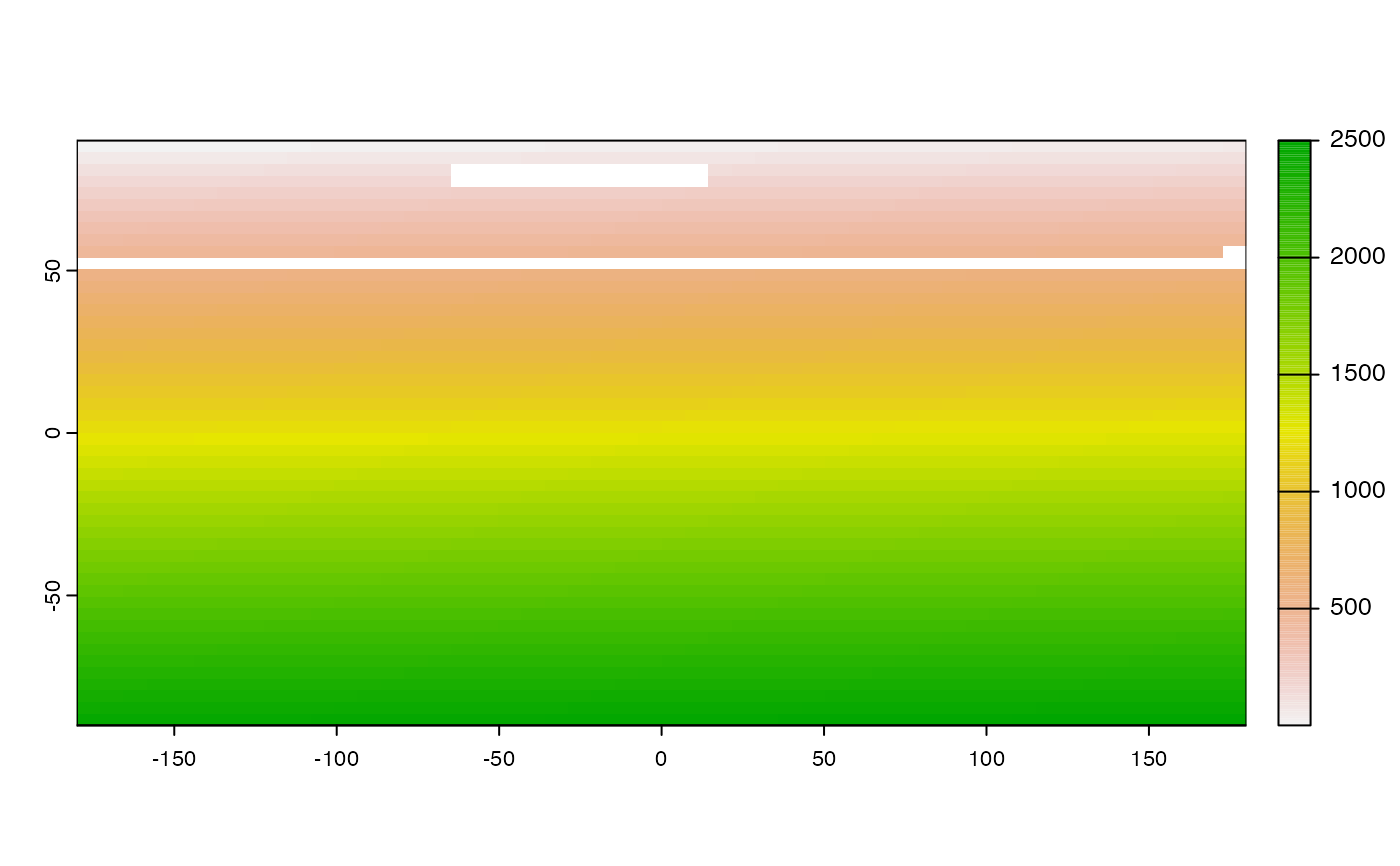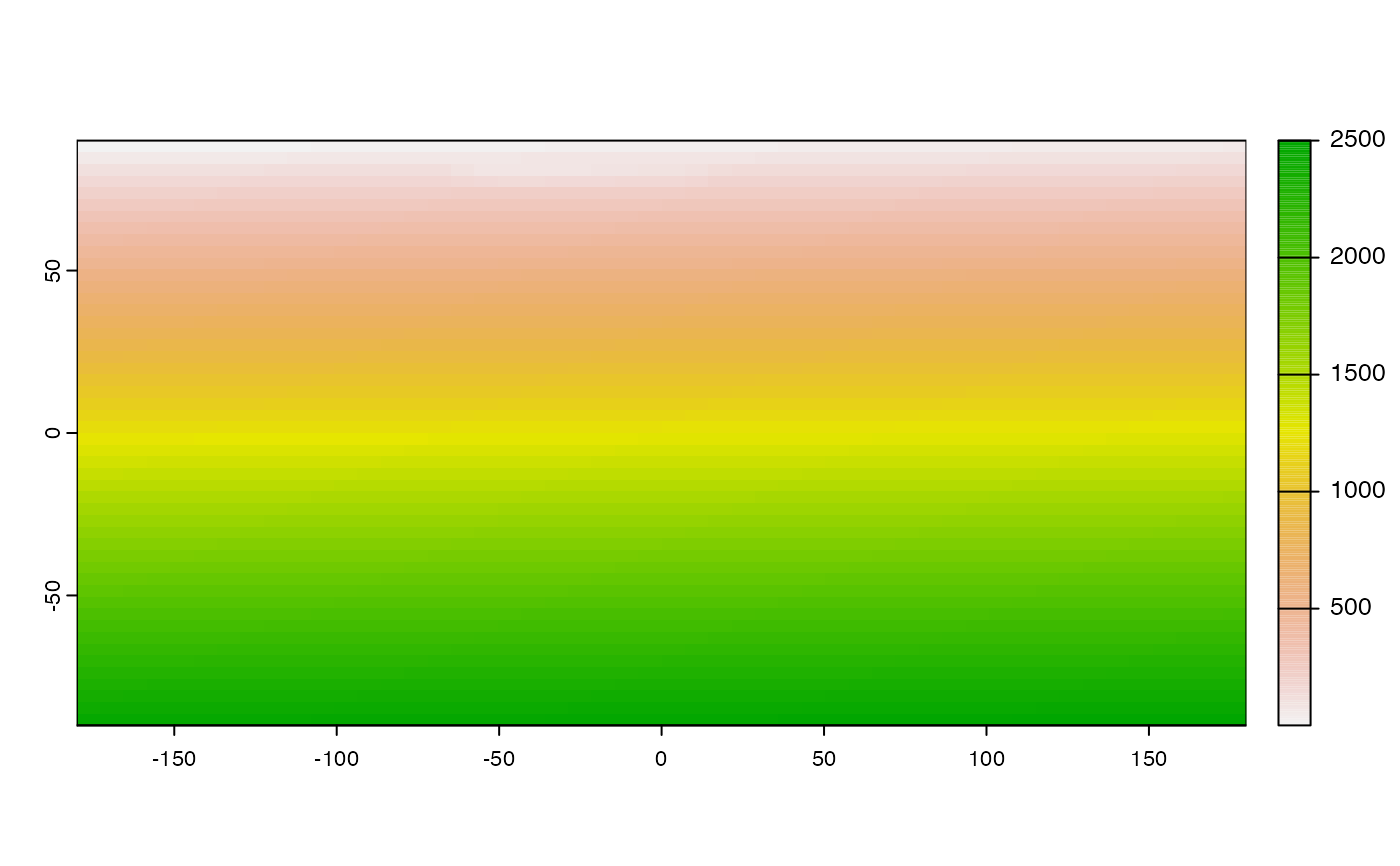Uses thin plate spline regression from
fields package to interpolate missing two-dimensional
raster values.
interpolateRaster(inputRaster, fast = FALSE, ...)Arguments
Value
An object of class raster
Details
Missing data values from original raster
are replaced with interpolated values. User has the
option of choosing fastTps to speed calculation,
but be advised that this is only an approximation
of a true thin plate spline.
Examples
# \donttest{
library(terra)
library(fields)
#> Loading required package: spam
#> Spam version 2.11-1 (2025-01-20) is loaded.
#> Type 'help( Spam)' or 'demo( spam)' for a short introduction
#> and overview of this package.
#> Help for individual functions is also obtained by adding the
#> suffix '.spam' to the function name, e.g. 'help( chol.spam)'.
#>
#> Attaching package: ‘spam’
#> The following objects are masked from ‘package:base’:
#>
#> backsolve, forwardsolve
#> Loading required package: viridisLite
#>
#> Try help(fields) to get started.
#>
#> Attaching package: ‘fields’
#> The following object is masked from ‘package:terra’:
#>
#> describe
# Create sample raster
r <- rast(ncol=50, nrow=50)
values(r) <- 1:2500
# Introduce a "hole"
values(r)[c(117:127, 167:177, 500:550)] <- NA
plot(r)
 # Patch hole with interpolateRaster
interpolatedRaster <- interpolateRaster(r)
#> Warning:
#> Grid searches over lambda (nugget and sill variances) with minima at the endpoints:
#> (GCV) Generalized Cross-Validation
#> minimum at right endpoint lambda = 1.263526e-05 (eff. df= 160.55 )
plot(interpolatedRaster)
# Patch hole with interpolateRaster
interpolatedRaster <- interpolateRaster(r)
#> Warning:
#> Grid searches over lambda (nugget and sill variances) with minima at the endpoints:
#> (GCV) Generalized Cross-Validation
#> minimum at right endpoint lambda = 1.263526e-05 (eff. df= 160.55 )
plot(interpolatedRaster)
 fastInterp <- interpolateRaster(r, fast = TRUE, aRange = 3.0)
plot(fastInterp)
fastInterp <- interpolateRaster(r, fast = TRUE, aRange = 3.0)
plot(fastInterp)
 # }
# }